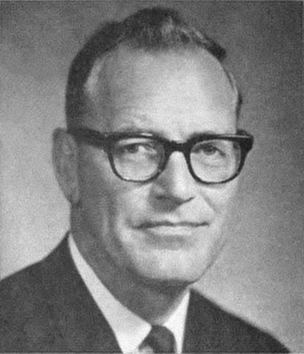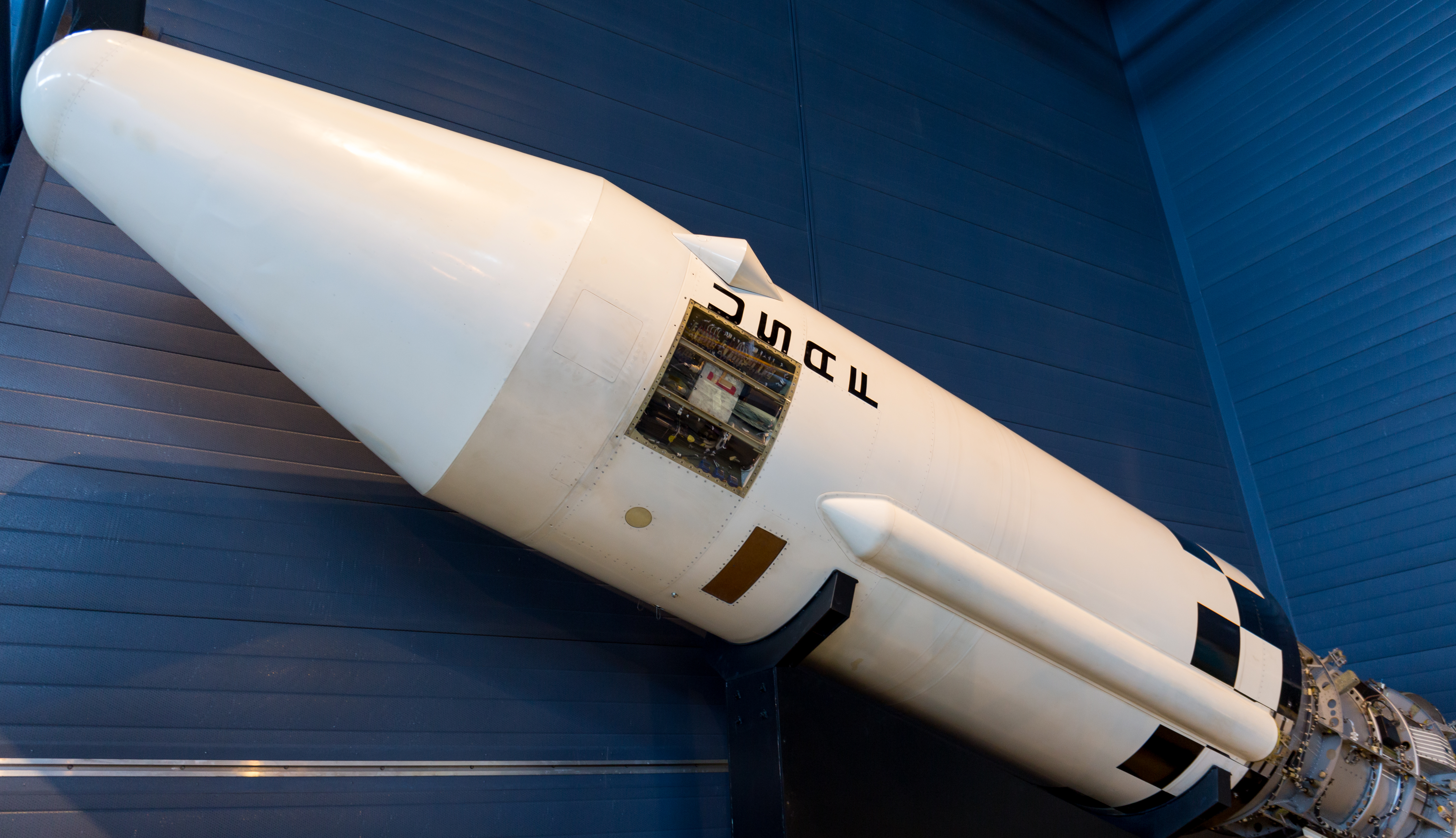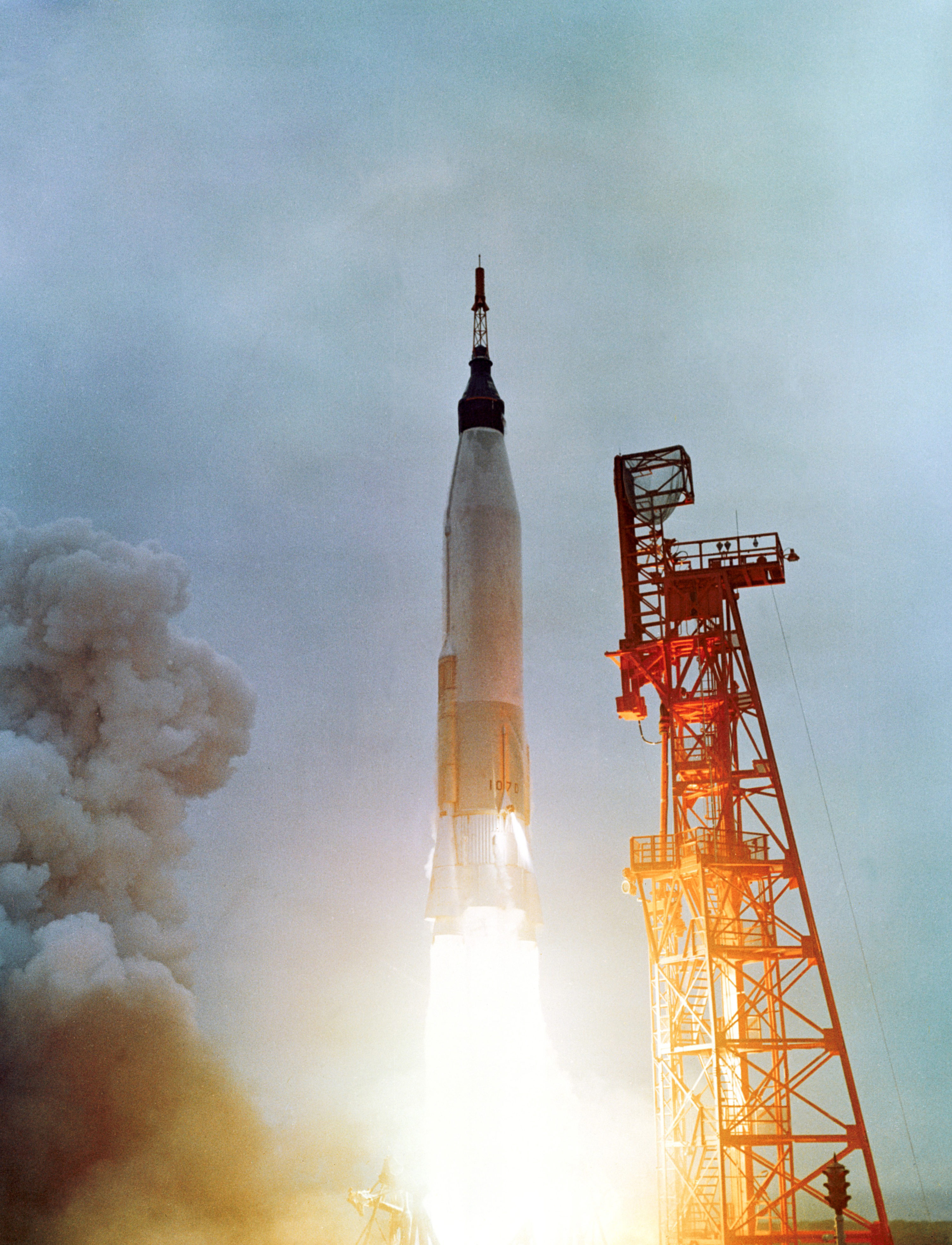|
Atlas Centaur
The Atlas-Centaur was a United States expendable launch vehicle derived from the SM-65 Atlas D missile. Launches were conducted from Launch Complex 36 at the Cape Canaveral Air Force Station (CCAFS) in Florida. Early development Convair, the manufacturer of the Atlas, developed the Centaur upper stage specifically for that booster, sharing its pressure stabilized tank structure. Technical Centaur was the first rocket stage to utilize liquid hydrogen (LH2) and liquid oxygen (LOX) as propellants. Despite high performance, LH2 had to be chilled at extremely low temperatures (lower than LOX) and its low density meant that large fuel tanks were needed. The first attempt at using an LH2/LOX-fueled engine was the U.S. Air Force's top-secret Lockheed CL-400 Suntan reconnaissance aircraft program in the mid-1950s. The progress made during the aborted venture was picked up by Convair and others for rocket stage use. Originally, Centaur was conceived of as a purely experimental proj ... [...More Info...] [...Related Items...] OR: [Wikipedia] [Google] [Baidu] |
Surveyor 1
Surveyor 1 was the first lunar soft-lander in the uncrewed Surveyor program of the National Aeronautics and Space Administration (NASA, United States). This lunar soft-lander gathered data about the lunar surface that would be needed for the crewed Apollo Moon landings that began in 1969. The successful soft landing of Surveyor 1 on the '' Ocean of Storms'' was the first by an American space probe on any extraterrestrial body, occurring on the first attempt and just four months after the first soft Moon landing by the Soviet Union's Luna 9 probe. Surveyor 1 was launched May 30, 1966, from the Cape Canaveral Air Force Station at Cape Canaveral, Florida, and it landed on the Moon on June 2, 1966. Surveyor 1 transmitted 11,237 still photos of the lunar surface to the Earth by using a television camera and a sophisticated radio-telemetry system. The Surveyor program was managed by the Jet Propulsion Laboratory, in Los Angeles County, California, and the Surveyor space probe was bu ... [...More Info...] [...Related Items...] OR: [Wikipedia] [Google] [Baidu] |
DARPA
The Defense Advanced Research Projects Agency (DARPA) is a research and development agency of the United States Department of Defense responsible for the development of emerging technologies for use by the military. Originally known as the Advanced Research Projects Agency (ARPA), the agency was created on February 7, 1958, by President Dwight D. Eisenhower in response to the Soviet Union, Soviet launching of Sputnik 1 in 1957. By collaborating with academia, industry, and government partners, DARPA formulates and executes research and development projects to expand the frontiers of technology and science, often beyond immediate U.S. military requirements.Dwight D. Eisenhower and Science & Technology, (2008). Dwight D. Eisenhower Memorial CommissionSource ''The Economist'' has called DARPA the agency "that shaped the modern world," and pointed out that "Moderna COVID-19 vaccine, Moderna's COVID-19 vaccine sits alongside weather satellites, Global Positioning System, GPS, Unmann ... [...More Info...] [...Related Items...] OR: [Wikipedia] [Google] [Baidu] |
Joseph Karth
Joseph Edward Karth (August 26, 1922 – May 29, 2005) was a U.S. Representative from Minnesota. He was a member of the Democratic Party. Born in New Brighton, Ramsey County, Minnesota; all four of his grandparents were German immigrants. He attended public schools and the University of Nebraska School of Engineering; interrupted his education during the Second World War to serve in the United States Army, with service in the European Theater of Operations; employed by the Minnesota Mining & Manufacturing Company; international representative of OCAW-AFL-CIO 1947–1958; member of the Minnesota House of Representatives, 1950–1958; elected as a member of the Democratic-Farmer-Labor Party to the 86th, 87th, 88th, 89th, 90th, 91st, 92nd, 93rd, and 94th congresses, (January 3, 1959 – January 3, 1977); was not a candidate for reelection to the 95th Congress in 1976; established a consulting firm; died on May 29, 2005, in Scottsdale, Arizona , settlement_type ... [...More Info...] [...Related Items...] OR: [Wikipedia] [Google] [Baidu] |
RM-81 Agena
The RM-81 Agena was an American rocket upper stage and satellite bus which was developed by Lockheed Corporation initially for the canceled WS-117L reconnaissance satellite program. Following the split-up of WS-117L into SAMOS and Corona for image intelligence, and MIDAS for early warning, the Agena was later used as an upper stage, and an integrated component, for several programs, including Corona reconnaissance satellites and the Agena Target Vehicle used to demonstrate rendezvous and docking during Project Gemini. It was used as an upper stage on the Atlas, Thor, Thorad and Titan IIIB rockets, and considered for others including the Space Shuttle and Atlas V. A total of 365 Agena rockets were launched between February 28, 1959 and February 1987. Only 33 Agenas carried NASA payloads and the vast majority were for DoD programs. On some missions, the payload was built directly into the Agena, which provided it with electric power, communications and three-axis stabilization. P ... [...More Info...] [...Related Items...] OR: [Wikipedia] [Google] [Baidu] |
Saturn I
The Saturn I was a rocket designed as the United States' first medium lift launch vehicle for up to low Earth orbit payloads.Terminology has changed since the 1960s; back then, 20,000 pounds was considered "heavy lift". The rocket's first stage was built as a cluster of propellant tanks engineered from older rocket tank designs, leading critics to jokingly refer to it as "Cluster's Last Stand". Its development was taken over from the Advanced Research Projects Agency in 1958 by the newly formed civilian NASA. Its design proved sound and flexible. It was successful in initiating the development of liquid hydrogen-fueled rocket propulsion, launching the Pegasus satellites, and flight verification of the Apollo command and service module launch phase aerodynamics. Ten Saturn I rockets were flown before it was replaced by the heavy lift derivative Saturn IB, which used a larger, higher total impulse second stage and an improved guidance and control system. It also led the way to ... [...More Info...] [...Related Items...] OR: [Wikipedia] [Google] [Baidu] |
Wernher Von Braun
Wernher Magnus Maximilian Freiherr von Braun ( , ; 23 March 191216 June 1977) was a German and American aerospace engineer and space architect. He was a member of the Nazi Party and Allgemeine SS, as well as the leading figure in the development of rocket technology in Nazi Germany and later a pioneer of rocket and space technology in the United States. As a young man, von Braun worked in Nazi Germany's rocket development program. He helped design and co-developed the V-2 rocket at Peenemünde during World War II. Following the war, he was secretly moved to the United States, along with about 1,600 other German scientists, engineers, and technicians, as part of Operation Paperclip. He worked for the United States Army on an intermediate-range ballistic missile program, and he developed the rockets that launched the United States' first space satellite Explorer 1 in 1958. He worked with Walt Disney on a series of films, which popularized the idea of human space travel in ... [...More Info...] [...Related Items...] OR: [Wikipedia] [Google] [Baidu] |
Atlas LV-3B
The Atlas LV-3B, Atlas D Mercury Launch Vehicle or Mercury-Atlas Launch Vehicle, was a human-rated expendable launch system used as part of the United States Project Mercury to send astronauts into low Earth orbit. Manufactured by Convair, it was derived from the SM-65D Atlas missile, and was a member of the Atlas family of rockets. With the Atlas having been originally designed as a weapon system, testing and design changes were made to the missile to make it a safe and reliable launch vehicle. After the changes were made and approved to, the US launched the LV-3B nine times, four of which had crewed Mercury spacecraft. Design The Atlas LV-3B was a human-rated expendable launch system used as part of the United States Project Mercury to send astronauts into low Earth orbit. Manufactured by American aircraft manufacturing company Convair, it was derived from the SM-65D Atlas missile, and was a member of the Atlas family of rockets. The Atlas D missile was the natural choice fo ... [...More Info...] [...Related Items...] OR: [Wikipedia] [Google] [Baidu] |
SM-65D Atlas
The SM-65D Atlas, or Atlas D, was the first operational version of the U.S. Atlas missile. Atlas D was first used as an intercontinental ballistic missile (ICBM) to deliver a nuclear weapon payload on a suborbital trajectory. It was later developed as a launch vehicle to carry a payload to low Earth orbit on its own, and later to geosynchronous orbit, to the Moon, Venus, or Mars with the Agena or Centaur upper stage. Atlas D was launched from Cape Canaveral Air Force Station, at Launch Complexes 11, 12, 13 and 14, and Vandenberg Air Force Base at Launch Complex 576. The fully operational D-series Atlas was similar to the R&D model Atlas B and C, but incorporated a number of design changes implemented as a result of lessons learned during test flights. In addition, the D-series had the full-up Rocketdyne MA-2 propulsion system with of thrust versus the of thrust in the Atlas B/C's engines. Operational Atlas D missiles retained radio ground guidance aside from a few R& ... [...More Info...] [...Related Items...] OR: [Wikipedia] [Google] [Baidu] |
Aurora 7
Mercury-Atlas 7, launched May 24, 1962, was the fourth crewed flight of Project Mercury. The spacecraft, named ''Aurora 7'', was piloted by astronaut Scott Carpenter. He was the sixth human to fly in space. The mission used Mercury spacecraft No. 18 and Atlas launch vehicle No. 107-D. The flight was for three Earth orbits, essentially a repeat of John Glenn's Mercury-Atlas 6. However, a targeting error during reentry took the spacecraft off-course, delaying recovery of Carpenter and the spacecraft for an hour. Carpenter was held responsible, at least in part, for the landing error. Carpenter left NASA for the Navy SEALAB program in 1964. Pilot The original pilot selected for Mercury Atlas-7 was to have been Deke Slayton, with Schirra as his back-up. However Slayton was removed from flight status after the discovery of cardiac dysrhythmia during a training run in the ''g''-loading centrifuge. Slayton had chosen the name ''Delta 7'' for the spacecraft, as this would have been t ... [...More Info...] [...Related Items...] OR: [Wikipedia] [Google] [Baidu] |
Scott Carpenter
Malcolm Scott Carpenter (May 1, 1925 – October 10, 2013) was an American naval officer and aviator, test pilot, aeronautical engineer, astronaut, and aquanaut. He was one of the Mercury Seven astronauts selected for NASA's Project Mercury in April 1959. Carpenter was the second American (after John Glenn) to orbit the Earth and the fourth American in space, after Alan Shepard, Gus Grissom, and Glenn. Commissioned into the U.S. Navy in 1949, Carpenter became a naval aviator, flying a Lockheed P-2 Neptune with Patrol Squadron 6 (VP-6) on reconnaissance and anti-submarine warfare missions along the coasts of Soviet Union and China during the Korean War and the Cold War. In 1954, he attended the U.S. Naval Test Pilot School at NAS Patuxent River, Maryland, and became a test pilot. In 1958, he was named Air Intelligence Officer of , which was then in dry dock at the Bremerton Navy Yard. The following year, Carpenter was selected as one of the Mercury Seven astronauts. He w ... [...More Info...] [...Related Items...] OR: [Wikipedia] [Google] [Baidu] |
Greenwich Mean Time
Greenwich Mean Time (GMT) is the Local mean time, mean solar time at the Royal Observatory, Greenwich, Royal Observatory in Greenwich, London, counted from midnight. At different times in the past, it has been calculated in different ways, including being calculated from noon; as a consequence, it cannot be used to specify a particular time unless a context is given. The term 'GMT' is also used as Western European Time, one of the names for the time zone UTC+00:00 and, in UK law, is the basis for civil time in the United Kingdom. English speakers often use GMT as a synonym for Coordinated Universal Time (UTC). For navigation, it is considered equivalent to UT1 (the modern form of mean solar time at 0° longitude); but this meaning can differ from UTC by up to 0.9s. The term GMT should thus not be used for purposes that require precision. Because of Earth's uneven angular velocity in its elliptical orbit and its axial tilt, noon (12:00:00) GMT is rarely the exact moment the S ... [...More Info...] [...Related Items...] OR: [Wikipedia] [Google] [Baidu] |
Atlas-Agena
The Atlas-Agena was an American expendable launch system derived from the SM-65 Atlas missile. It was a member of the Atlas family of rockets, and was launched 109 times between 1960 and 1978. It was used to launch the first five Mariner uncrewed probes to the planets Venus and Mars, and the Ranger and Lunar Orbiter uncrewed probes to the Moon. The upper stage was also used as an uncrewed orbital target vehicle for the Gemini crewed spacecraft to practice rendezvous and docking. However, the launch vehicle family was originally developed for the Air Force and most of its launches were classified DoD payloads. The Atlas-Agena was a two-and-a-half-stage rocket, with a stage-and-a-half Atlas missile as the first stage, and an RM-81 Agena second stage. Initially, Atlas D missiles, redesignated as the LV-3, were used as the first stage. These were later replaced by the standardized Atlas SLV-3, and its derivatives, the SLV-3A and B. The final Atlas-Agena launch used an Atlas E/F. T ... [...More Info...] [...Related Items...] OR: [Wikipedia] [Google] [Baidu] |






